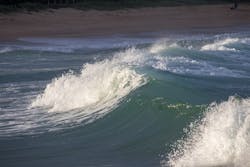EPA Announces New Water Infrastructure Project Funding
Today, the U.S. Environmental Protection Agency (EPA) announced the availability of funding that could provide as much as $5.5 billion in loans, which could leverage over $11 billion in water infrastructure projects through the Water Infrastructure Finance and Innovation Act (WIFIA) program. Prospective borrowers seeking WIFIA credit assistance must submit a letter of interest (LOI) by July 6, 2018.
“Thanks to the President’s leadership, this WIFIA funding will spark new investments to repair our nation’s crumbling water infrastructure,” said EPA Administrator Scott Pruitt. “EPA will play a key role in the President’s infrastructure efforts by incentivizing states, municipalities, and public-private partnerships to protect public health, fix local infrastructure problems, create jobs, and provide clean water to communities.”
The WIFIA program received $63 million in funding in the Consolidated Appropriations Act, 2018, which was signed into law by President Donald Trump on March 23, 2018. This more than doubles the program’s funding from 2017. Leveraging private capital and other funding sources, these projects could support $11 billion in water infrastructure investment and create more than 170,000 jobs. This year’s Notice of Funding Availability (NOFA) highlights the importance of protecting public health including reducing exposure to lead and other contaminants in drinking water systems and updating the nation’s aging infrastructure.
“An investment in water infrastructure is an investment in our communities,” said Dr. Andrew Sawyers, director of the Office of Wastewater Management. “The WIFIA program helps improve water quality and protect public health while supporting the local economy.”
The WIFIA program will play an important part in making vital improvements to the nation’s water infrastructure and implementing the President’s Infrastructure Plan, which calls for increasing the program’s funding authorization and expanding project eligibility.
“It’s clear in Region 7 that additional infrastructure financing is needed by states and local governments,” said EPA Region 7 Administrator Jim Gulliford. “By helping communities modernize the nation's aging water infrastructure, we support the safe drinking water systems upon which our public health depends.”
Background
Established by the Water Infrastructure Finance and Innovation Act of 2014, the WIFIA program is a federal loan and guarantee program at EPA that aims to accelerate investment in the nation’s water infrastructure by providing long-term, low-cost supplemental loans for regionally and nationally significant projects.
WIFIA credit assistance can be used for a wide range of projects, including:
-
drinking water treatment and distribution projects
-
wastewater conveyance and treatment projects
-
enhanced energy efficiency projects at drinking water and wastewater facilities
-
desalination, aquifer recharge, alternative water supply, and water recycling project
-
drought prevention, reduction, or mitigation projects
EPA will evaluate proposed projects described in the LOIs using WIFIA’s statutory and regulatory criteria as described in the NOFA. Through this competitive process, EPA will select projects that it intends to fund and invite them to continue to the application process.
In 2017, for WIFIA’s inaugural round, EPA invited 12 projects in nine states to apply for more than $2 billion in WIFIA loans.
